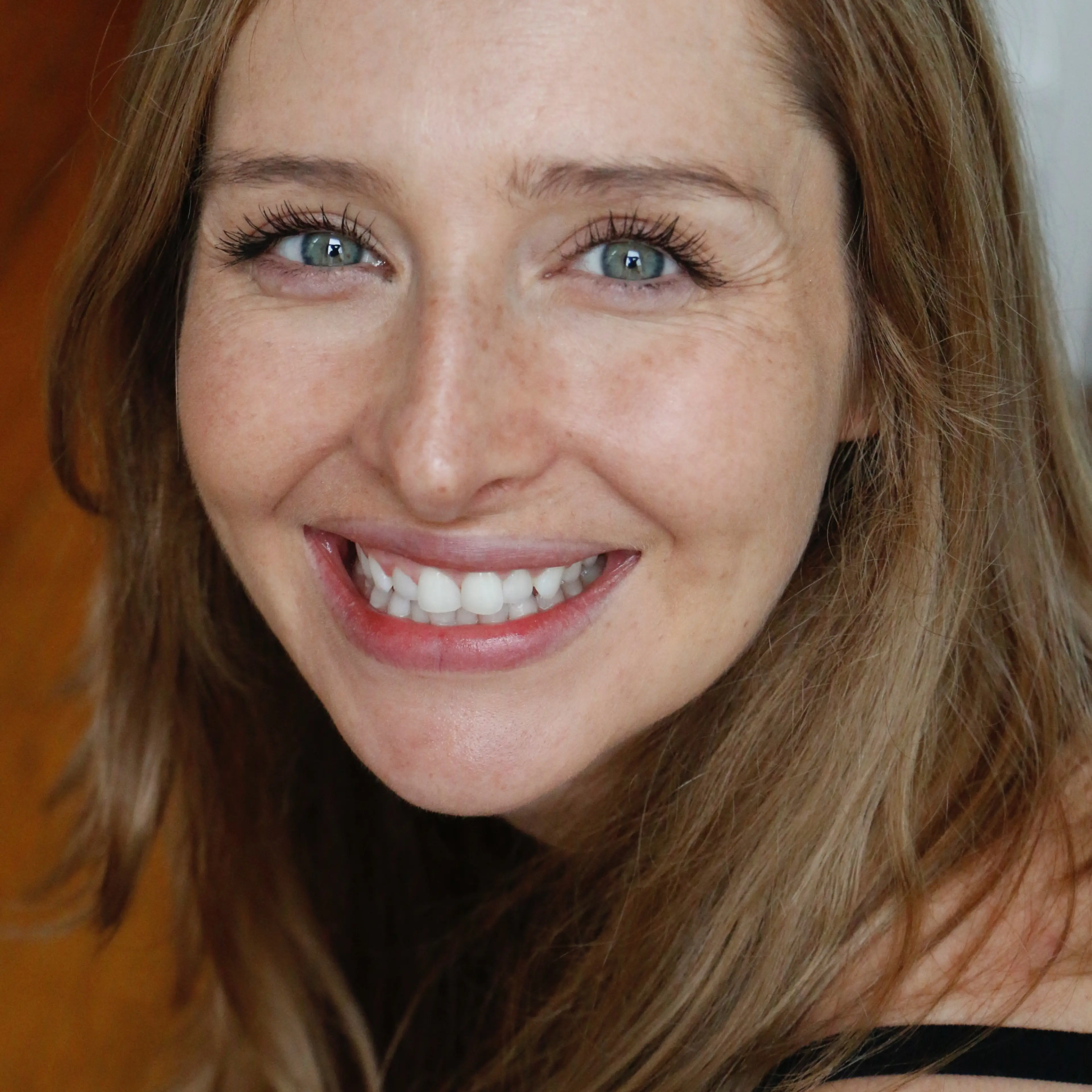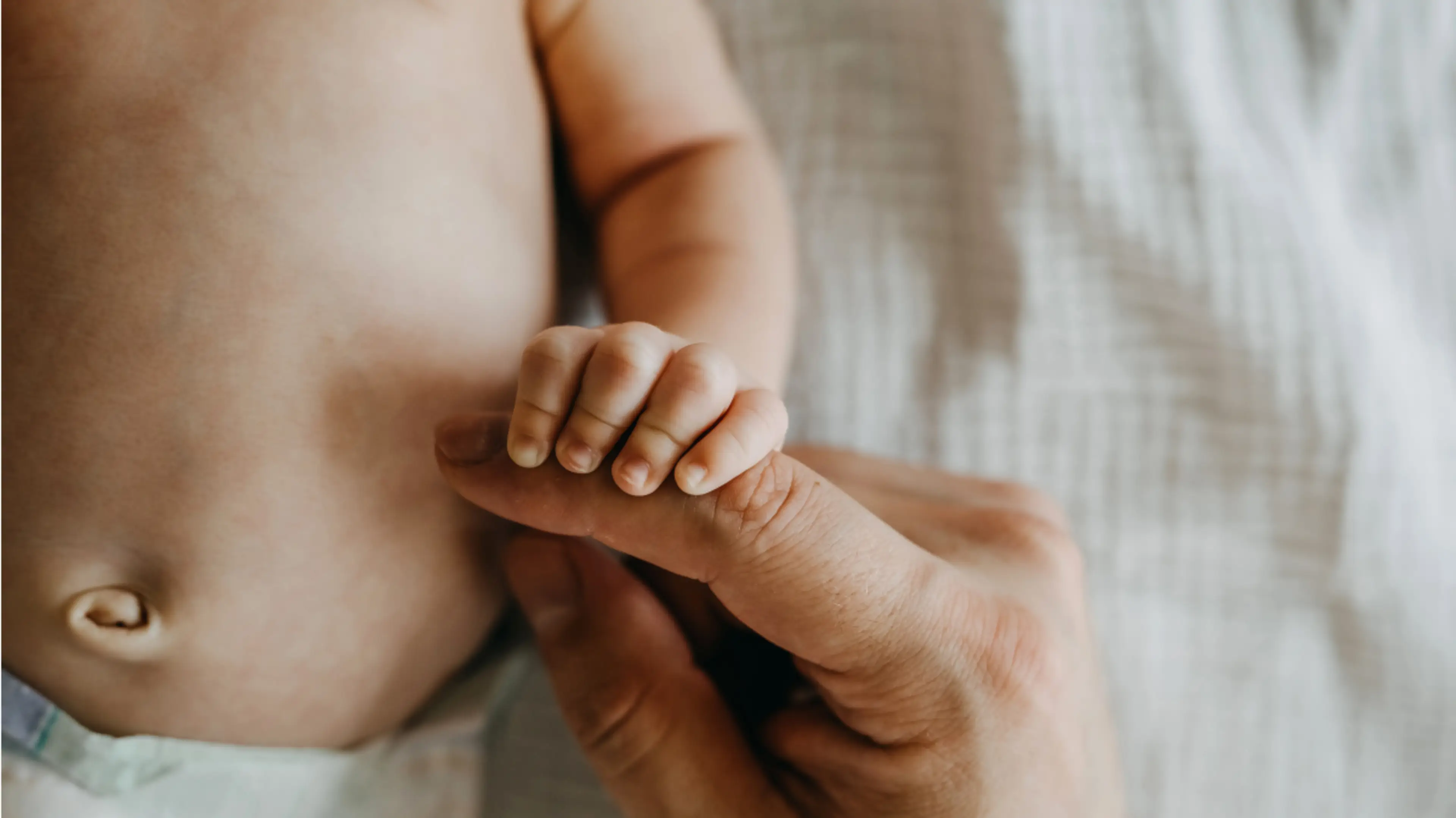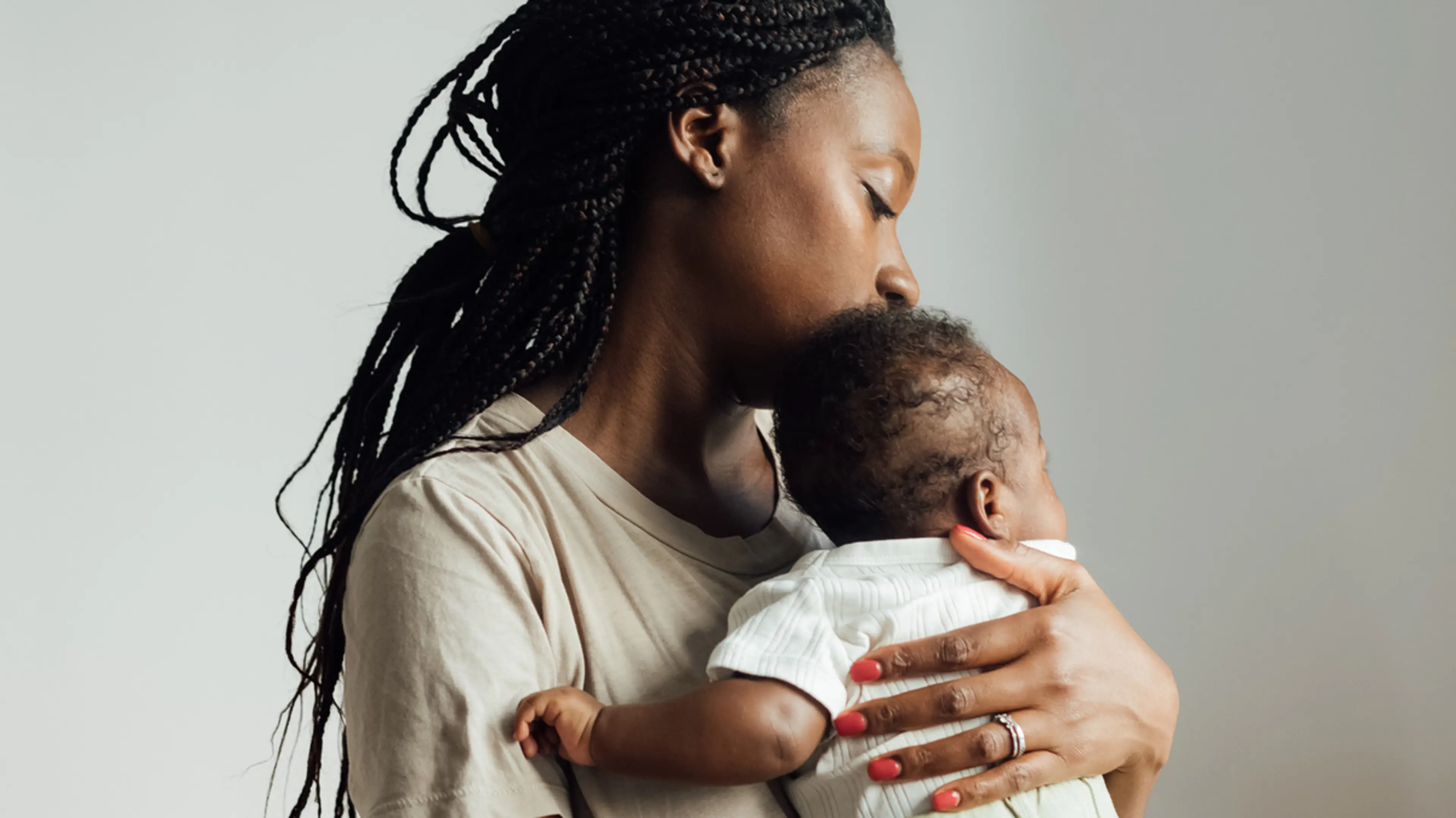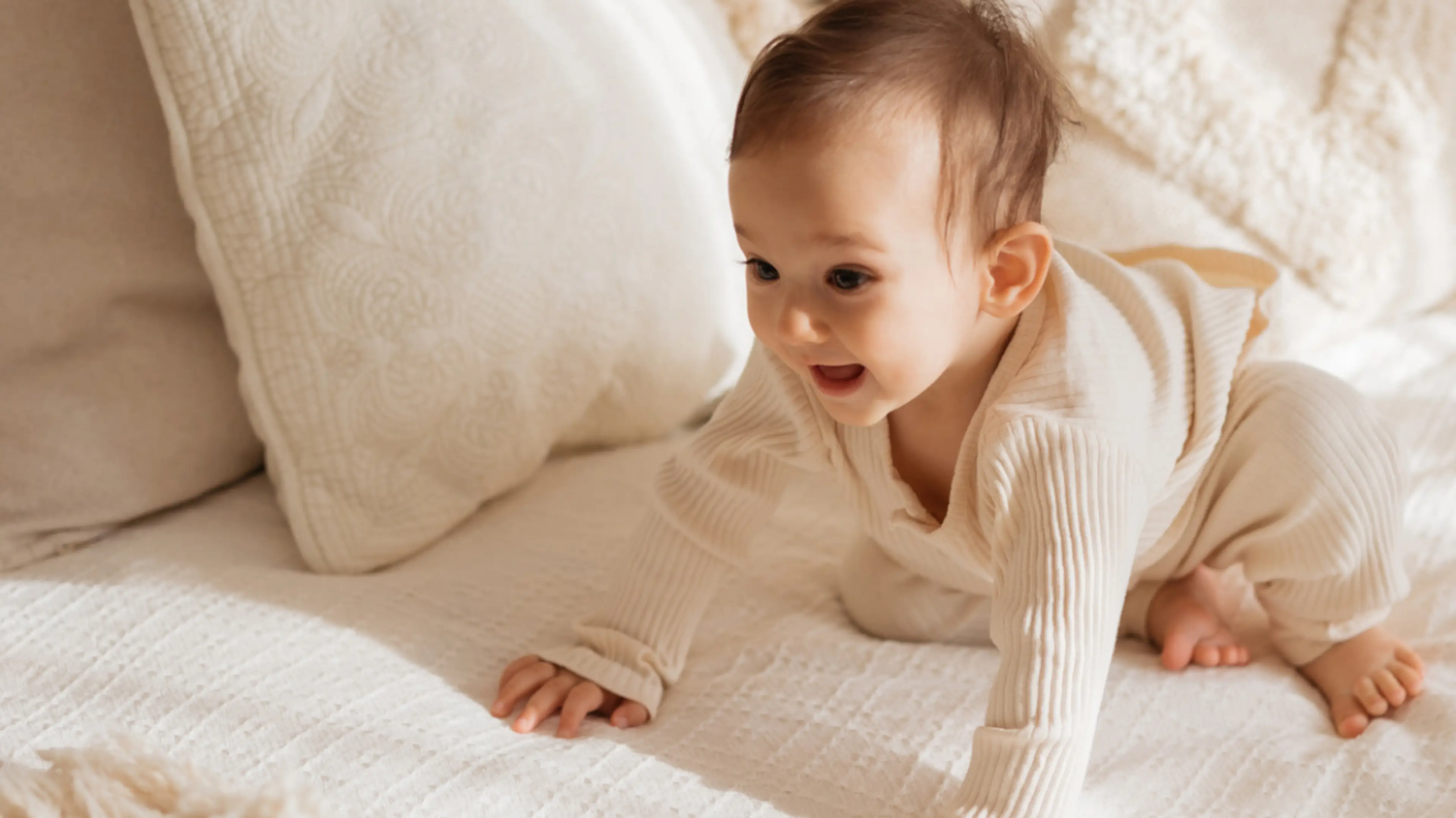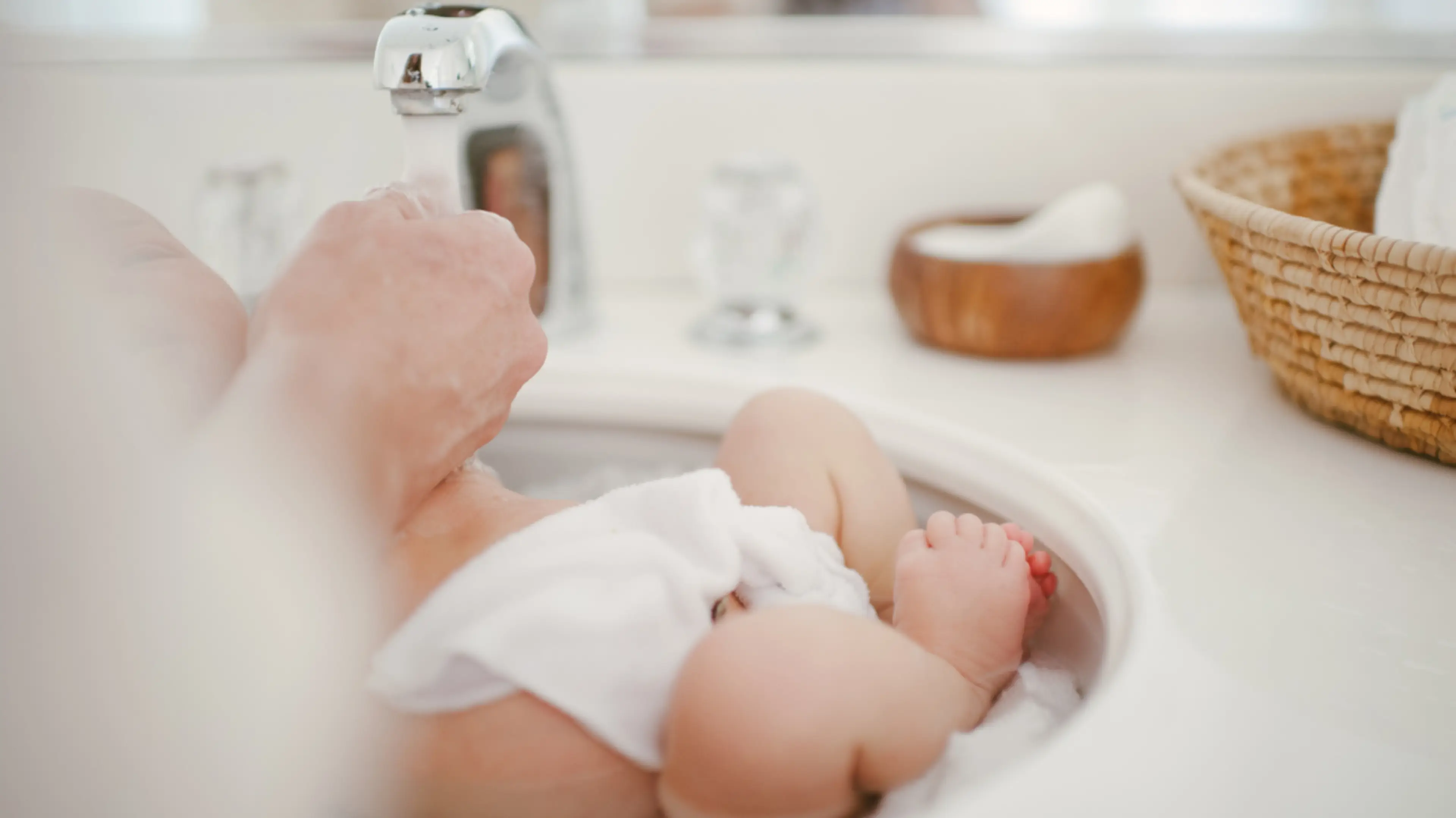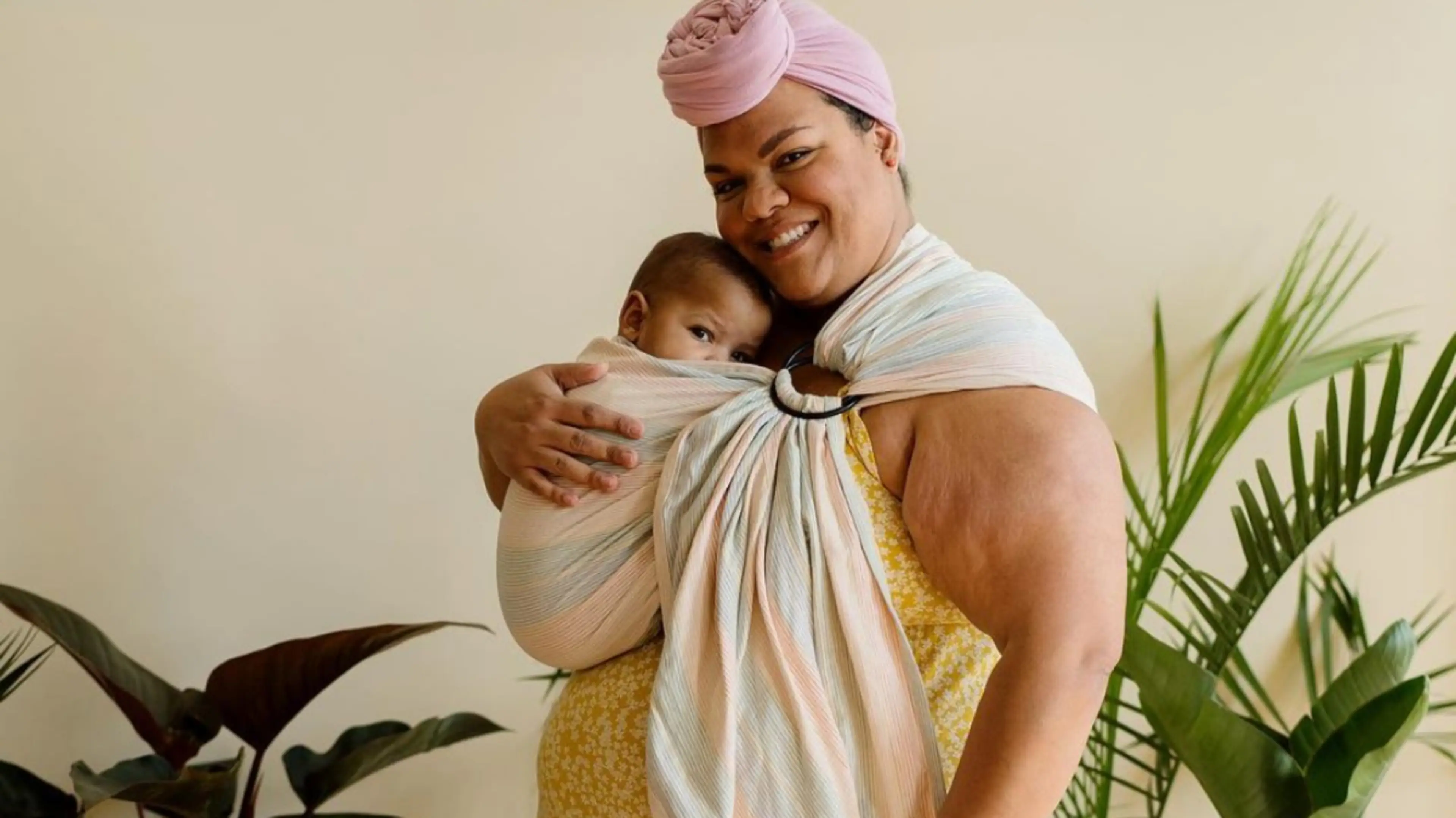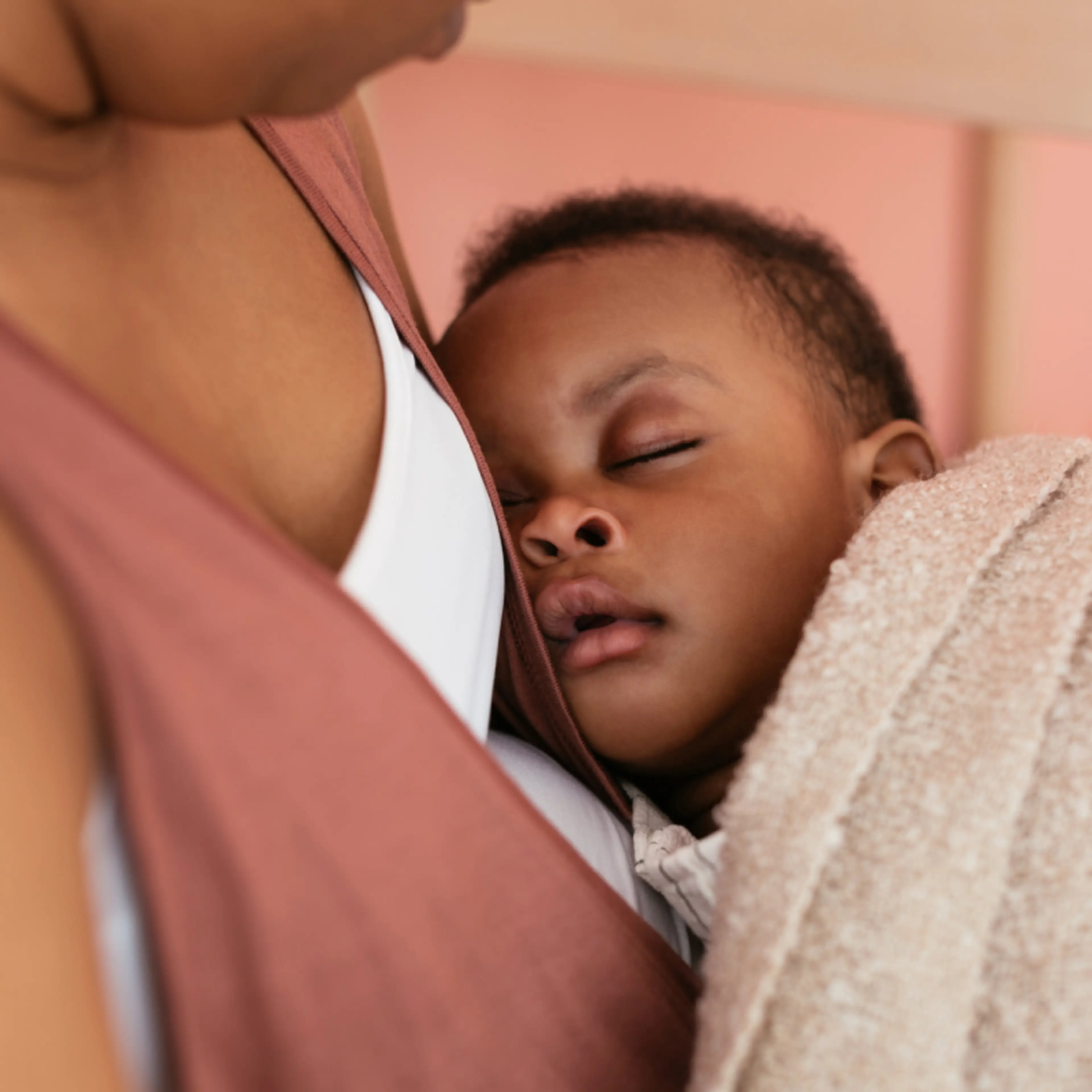TLDR: Sleep training is a technique to help babies self-soothe so they can fall asleep, stay asleep, and eventually sleep through the night all by themselves. Teaching your baby how to do this can be a challenge…or it might just be easier than you thought if you have the right guidance. A sleep expert breaks down what you should expect from your baby’s sleep habits and how your baby can help you figure out when to make the transition.
I thought sleep training was going to be a nightmare. At six months postpartum, my husband and I decided to transition our daughter Annabell to the crib. Being new parents, we knew we had no idea how to sleep train a baby, but after months of sleep deprivation, we were desperate to get her to sleep through the night.
Understandably, this transition didn’t come without obstacles.
Each night, we’d lay Annabell down in her crib, shut the door, turn on the monitor, and stare in disbelief as she screamed and cried at the top of her lungs. It was torture. No matter how hard we tried to resist going in to soothe her, eventually, one of us would crack, go in, and reset the whole sleep training process.
Our first attempts at sleep training didn’t seem to be working very well. So my husband and I made a deal. We agreed we wouldn’t go into Annabell’s room until she had been crying for at least five minutes. The buzzer went off and she was still in full-blown freak-out mode.
I felt helpless.
So one evening, I decided to switch things up. The moment the timer hit five minutes, I turned to my husband and said, “Give her two more minutes.” Although we both hated the idea of her crying more, we knew we had to do something different if we wanted our baby to sleep through the night.
Just when we thought we’d failed at the whole sleep training thing, something happened. At six minutes and 45 seconds, Annabell’s crying stopped. Our daughter had finally fallen asleep on her own.
So, we continued our sleep training by waiting at least seven minutes before going into her room. And within a few days, our daughter was falling asleep on her own without crying. She had learned to soothe herself to sleep rather than relying on us.
While it’s true my husband and I might have gotten lucky with this seven-minute sleep training outcome, I’ve come to realize that getting a baby to sleep through the night is no small feat. Speaking with women through Expectful has shown me that my husband and I aren’t the only parents who’ve struggled with sleep-training a baby.
Many new parents want help but don’t know who to turn to for accurate sleep training advice— and there’s a ton out there.
In my search for reliable advice on how to successfully sleep train a baby, I reached out to baby sleep specialist and author of “The Baby Sleep Solution1 ,” Suzy Giordano. Giordano addresses your burning questions about baby sleep and sleep training, including tips to make the transition much smoother.
The Ideal Sleep Schedule from Birth to Toddlerhood
Expectful: Is there an ideal sleep schedule to follow during the first year? If so, is that schedule different for a newborn compared to a one-year-old?
Suzy Giordano: When babies first come into the world, they have to adjust to the new environment around them. Think about it. Your baby goes from being in a perfect environment where everything is balanced and given to them without hesitation to a not-so-perfect environment where they have to communicate to get what they want.
The First Three Months
The first three months are what I call the transitional time. During this period, I encourage new parents to create a schedule around feedings rather than sleep. I do this because the number one thing you want to focus on as a new parent is helping your baby to gain weight so their body can sustain their new environment.
During the first three months, you can’t create a bad habit. So don’t be afraid to hold, love, and bond with your baby.
At Three Months Old
Towards the end of three months, your baby will begin to get to a magical weight allowing them to sleep for longer stretches throughout the night. There are a couple of signs that’ll tell you your baby is ready for the next phase in sleep training:
They have more energy to stay awake and engage with their environment during the day.
They are eating less.
When your baby hits this point, I recommend having your baby sleep 12 hours through the night and take two naps during the day: one two-hour nap in the morning and one two-hour nap in the afternoon. [Editor’s Note: 12 hours of sleep is a goal to work toward. Don’t beat yourself up if it takes some time for your baby to reach that full amount of overnight sleep.]
One Year Old and Beyond As your child grows, they’ll be able to manage to stay awake for more extended periods during the day, so you will need to alter their nap schedule.
One year-old: They should be sleeping 12 hours through the night and taking one one-hour nap in the morning and a two-hour nap in the afternoon.
18 months old: They shift to needing one two-hour nap in the middle of the day. This continues up until they’re three or four years old.
The Next Step in Sleep Training a Baby: Transitioning to a Crib
Expectful: When should you transition a baby to the crib?
SG: The new guidelines for safely avoiding Sudden Infant Death Syndrome (SIDS)2 states a baby should sleep in the same room as their parents until they’re at least six months old.
However, I believe you can transition your baby to the crib at any time. It’s a very personal decision. The crib is the safest place for your baby to sleep so you can transition at any time, but I also want to note here that [in 2022], new guidelines3 came out that said that there was a greater decrease in SIDS for babies who shared a room with their parents. So, having your baby sleep in a crib in the same room as you could be optimal.
When you do decide to move your baby to a crib, it will be a learning experience for all of you. When newly sleeping in a crib, your baby will most likely cry for one to two nights, so set yourself up for success by scheduling this transition at the start of a weekend or a time when your sleep can be more compromised.
Expectful: Is there an ideal time you recommend parents start transitioning their baby to sleep in a crib? SG: Yes, the ideal time to start this transition is around eight weeks. At eight weeks, they start stabilizing, meaning they’re not as cranky and crying as much, and they’re finally beginning to digest their food better, so they aren’t as irritated by gas.
I always tell parents, if you need to do a big transition, do it between weeks 8 and 12 because it will be easier.
Sleep Training and Crib Safety
Expectful: What are the precautions all parents should take to avoid SIDS?
SG: First of all, I don’t think it can be 100% prevented, but according to the evidence found, it’s essential to have certain things in place to help eliminate it from happening.
The number one thing that you want to keep in mind is safety—it’s imperative. Whatever you do, make sure your baby’s environment within the crib is safe.
A safe crib environment means:
No blankets
No pillows
No bumpers around the crib
Nothing that could compromise your baby’s breathing
No loose-fitting sheets
No stuffed animals
Have a fan on to circulate air, making an optimal breathing environment
But the number one thing you can do to avoid SIDS is not to sleep with your baby in your bed. Your baby has to have a designated safe sleeping space just for them. This will protect them from sliding or rolling in towards something that could restrict their breathing.
Expectful: If my newborn begins rolling over in their crib, what should I do?
SG: Once your baby develops a new ability like rolling over, they can’t unlearn it. The main thing you need to do is always start your baby lying on their back and stay on guard throughout the night.
Also, a necessary part of sleep training a baby is to have them do a lot of daytime tummy time immediately. Tummy time will help them build enough strength to lift their head and learn how to roll from their tummy to their back. If your baby flips over relatively early, just know you were given a very physical baby! All you can do is help them use their physical strength to learn how to flip the other way.
Bedtime Routines Are Essential in Sleep Training
Expectful: What is the best way to put my baby to sleep at night?
SG: Falling asleep is an ability that is learned over time. As a parent, all you can do is give your baby the best circumstances to help them develop this essential ability. In comes the bedtime routine. An ideal nighttime routine would include:
Feeding your baby
Bathing your baby
Playing soothing background sounds in their room as they fall asleep
Think of this as a time to help your baby transition from an active (day) world to a serene (night) world.
Expectful: What do I do if my baby immediately cries when I put them to bed after their bedtime routine?
SG: Sleep training a baby is all about allowing them to try to do things themselves. Give your baby room to grow and figure it out. Of course, if they absolutely need you, go in to soothe them. But if they don’t, and you just can’t stand listening to their cries, try to give them some time to learn how to fall asleep on their own.
Now, if they get to an emotional place where they’re not learning anything, step in and bring them back to a calm place and try again. The key for you is to start that magic at the 8 to 12-week mark.
I think mothers are empowered when they know they can go in and reassure their baby. You can love them for a bit, reset them, and try again. Your position is to be their guide so they can become independent and find strength within themselves.
Sleep Training Obstacles
Expectful: What can I do if my baby wakes up every few hours? How can I get my baby to sleep through the night?
SG: There are three skills you’re trying to help your baby develop:
Learning how to fall asleep
Learning how to stay asleep
Learning how to wake up happy
In the middle of the night, your number one goal is to eliminate any physical need that your baby could have. For example, it’s a good idea to write down every time your baby eats. While this might be difficult when you’re sleep-deprived, it may help you weed out the reason for their crying. If you know they were fed and they are still crying, they could just be crying because they want you to help them get back to sleep.
Use the “three-minute rule.” If you know your baby is fed and safe, wait three minutes before going into the room. This allows them to fall back to sleep by themself, without you intervening.
I always say to parents that they go into the room a minute before the miracle happens. So give your baby room to grow.
Expectful: If my baby will only fall asleep in my or my partner’s arms, what can I do to change that?
SG: Your baby can fall asleep without being held. But you’ve convinced yourself that it’s the only way, so it’s become a crutch. You have to let go of it.
Wait for a weekend to start to begin sleep training a baby, so you don’t have to worry so much about compromising your sleep. Use the above tips to help prepare your baby for bed (feed, bathe, soothing music). Then lay them down.
Of course, they’re going to cry because you’re teaching them something new. It all comes down to you allowing your baby to try to fall asleep on their own.
That’s it.
If you don’t give them the opportunity, they’re going to grow accustomed to that crutch, right? You know they don’t need it, but they think they do. Be there to support them. Use the tips I’ve provided. Believe me. Your baby will get to where they need to be.
